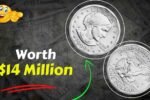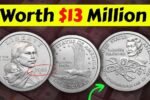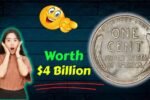Join on WhatsApp
Get the latest updates directly on WhatsApp – motivation, news & more!
Imagine receiving a simple quarter in your change and later discovering it could be worth an unimaginable $2.5 billion. This sounds like a fairytale, but collectors and enthusiasts continue to chase the possibility that a rare version of the 1776–1976 Bicentennial Quarter could be hiding in plain sight.
The Birth of the Bicentennial Quarter
In 1976, the United States Mint issued a unique quarter to mark the 200th anniversary of American independence. Unlike regular quarters, its reverse side displayed a colonial drummer and the dates 1776–1976, while George Washington’s portrait remained on the front.
These quarters were produced in huge numbers, with millions entering circulation. While most remain worth just 25 cents, stories of rare versions with errors or unusual features have fascinated coin collectors for decades.
A Coin of Cultural Significance
The Bicentennial Quarter was more than just money. It carried national pride, symbolizing the spirit of the American Revolution. The design featured a drummer boy surrounded by thirteen stars, representing the original colonies. Chosen through a public design competition, it was a patriotic reminder of the nation’s history and resilience.
What Makes Some Quarters Valuable
Though the majority of Bicentennial Quarters are ordinary, a few rare variations have been rumored to hold extraordinary value. Experts suggest that experimental compositions or minting errors could make certain coins unique. Off-center strikes, double dies, or unusual metal use may transform a common coin into a highly desirable collectible.
Why They Are Still Circulating
Despite their historical value, many Bicentennial Quarters remain in everyday use. Their high mintage and close resemblance to regular quarters make them easy to overlook. Even if one carries hidden value, most people pass it along without ever realizing its worth.
How to Identify a Potentially Valuable Quarter
| Feature | What to Check |
|---|---|
| Mint mark | Look for rare marks such as “S” for San Francisco or “W” for West Point |
| Metal | Coins before 1965 often contained silver, adding to their value |
| Condition | Uncirculated or proof coins are worth more than worn ones |
| Errors | Watch for unusual features like double strikes or missing layers |
| Date and design | The 1776–1976 design itself attracts collector interest |
| Authentication | Submitting coins to PCGS or NGC ensures verified value |
| Market demand | Rare and historic coins draw attention from collectors worldwide |
The Legacy of the Bicentennial Quarter
The Bicentennial Quarter is remembered not only for its design but also for sparking public interest in coin collecting. It remains a cultural artifact, cherished by historians and hobbyists alike. Rare versions, if they exist, continue to fuel stories of hidden treasures waiting to be discovered.
Myth Versus Reality
The idea of a Bicentennial Quarter worth $2.5 billion captures the imagination, yet no confirmed sale or official record proves such a valuation. While many collectors value these coins, most are still worth only their face value unless marked by extraordinary rarity. For coin owners, the key is to inspect mint marks, condition, and possible errors before assuming they hold a fortune.
FAQs
What is the 1776–1976 Bicentennial Quarter?
It is a commemorative U.S. coin issued for the 200th anniversary of American independence.
Why does the coin show two dates?
The dual dates 1776–1976 represent the two centuries since the signing of the Declaration of Independence.
Can a Bicentennial Quarter really be worth $2.5 billion?
The claim is mostly a myth. While rare varieties may have collector value, no confirmed coin has reached such an amount.
How can I know if my quarter is rare?
Check for mint marks, errors, or proof quality. The safest option is to consult a coin expert for authentication.
Why are coins sometimes so valuable?
Unique compositions, limited editions, or historical significance make certain coins highly desirable to collectors and museums.



